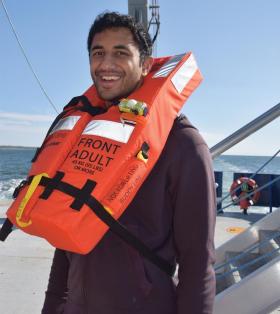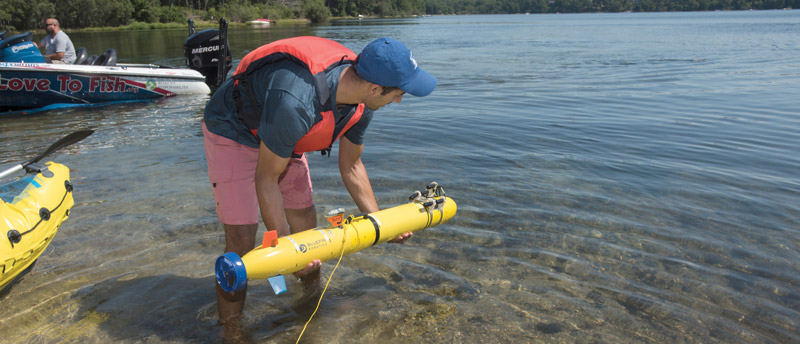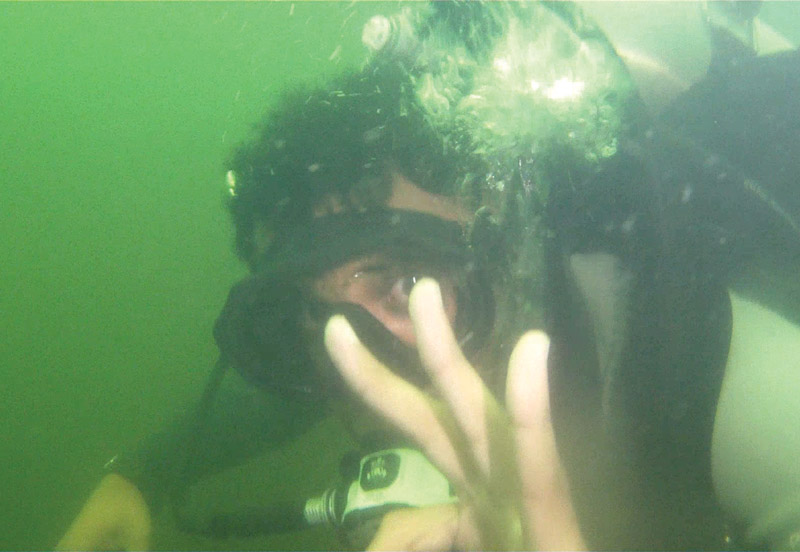BE THE (CLIMATE) CHANGE You Wish to See
Spring
2019
Feature
BE THE (CLIMATE) CHANGE You Wish to See
Eeshan Bhatt, Graduate Student, Massachusetts Institute of Technology & Woods Hole Oceanographic Institution
 As a PhD candidate in oceanography at the Massachusetts Institute of Technology and Woods Hole Oceanographic Institution (WHOI), I am often asked how I found myself here. While the long answer is cochlear, gravitating around chance opportunities and excellent mentors, the short answer is quite simple: climate change.
As a PhD candidate in oceanography at the Massachusetts Institute of Technology and Woods Hole Oceanographic Institution (WHOI), I am often asked how I found myself here. While the long answer is cochlear, gravitating around chance opportunities and excellent mentors, the short answer is quite simple: climate change.
When I was finishing up my undergraduate studies (in mechanical engineering and materials research), I wanted to put all my accrued technical knowledge into solving a problem that could directly help people, not just be academically interesting. For me, that meant tackling some part of the climate crisis.
My current research focuses on how collaborative networks of different types of autonomous underwater vehicles can leverage acoustic transmissions to be more efficient data gatherers than traditional profiling platforms, which usually collect point measurements as they drift wherever the ocean current takes them.
As you may know, sound travels much faster underwater than in air, and the path it takes changes based on the temperature and salinity of the medium. By inverting the acoustic transmissions between a source and receivers on various vehicles, we can estimate what large spans of ocean volumes look like much faster than we could before. Furthermore, by having these vehicles assimilate the information they receive with pre-run models, they can communicate with each other to reposition themselves to take the most useful data.
Having better data lets us run climate models with a more accurate driving input and monitor how quickly a specific region, such as the Arctic, is changing. My research is just one small contribution to the various technologies, experiments, and theories in the broader field of ocean and climate research, and depending on the day, you might think I was an acoustics physicist, robotics engineer, or data scientist.
One of the great things about the research done at WHOI—and ocean and climate research in general—is that it’s interdisciplinary. Researchers come from various backgrounds such as physics, mathematics, chemistry, biology, geology, and engineering. Many projects necessitate researchers to work across these disciplines to make the best use of ship time and fully understand the scope of the science. If you so choose, fieldwork can take you on six-month-long cruises, training as a scientific diver or setting up remote stations for continuous monitoring. That empirical data collection is balanced out by modeling, data analysis, or instrument development. All these methodologies are necessary to paint a complete picture of a system as complex as the earth, especially when we are experiencing dramatic variability. 
At this point in human history we are at unprecedented crossroads for the relationship we have with our natural environment and its resources. When we hear stories about global warming and reducing greenhouse gas emissions, it’s easy to forget that the ocean is our greatest heat and carbon sink. Understanding how the ocean is changing is vital to understanding how our own lives will change.
In October 2018, the Intergovernmental Panel on Climate Change issued a report calling for “rapid and far-reaching” change to limit global warming to 1.5 degrees Celsius (lowering the bar from 2 degrees Celsius as previously established by the Paris Climate Agreement of 2015). This limit is derived from minimizing significant impacts on ecosystems and human health and would go hand in hand with ensuring a more sustainable and equitable society. There is a lot of work to be done to reach that goal—so let’s get to it. 
